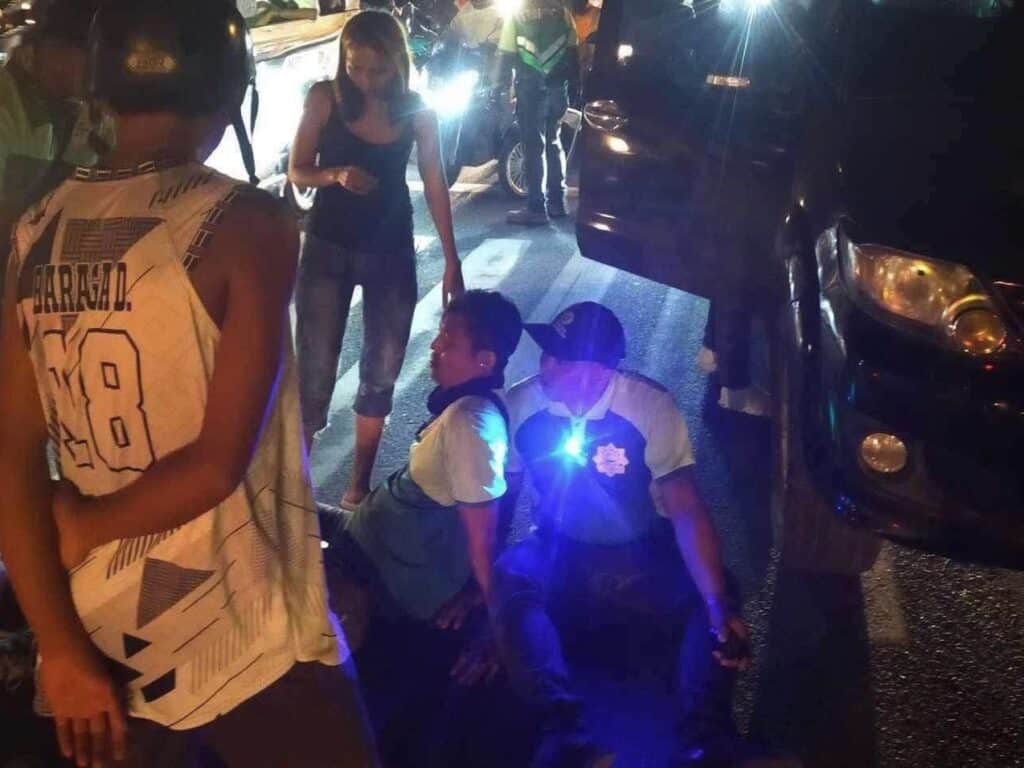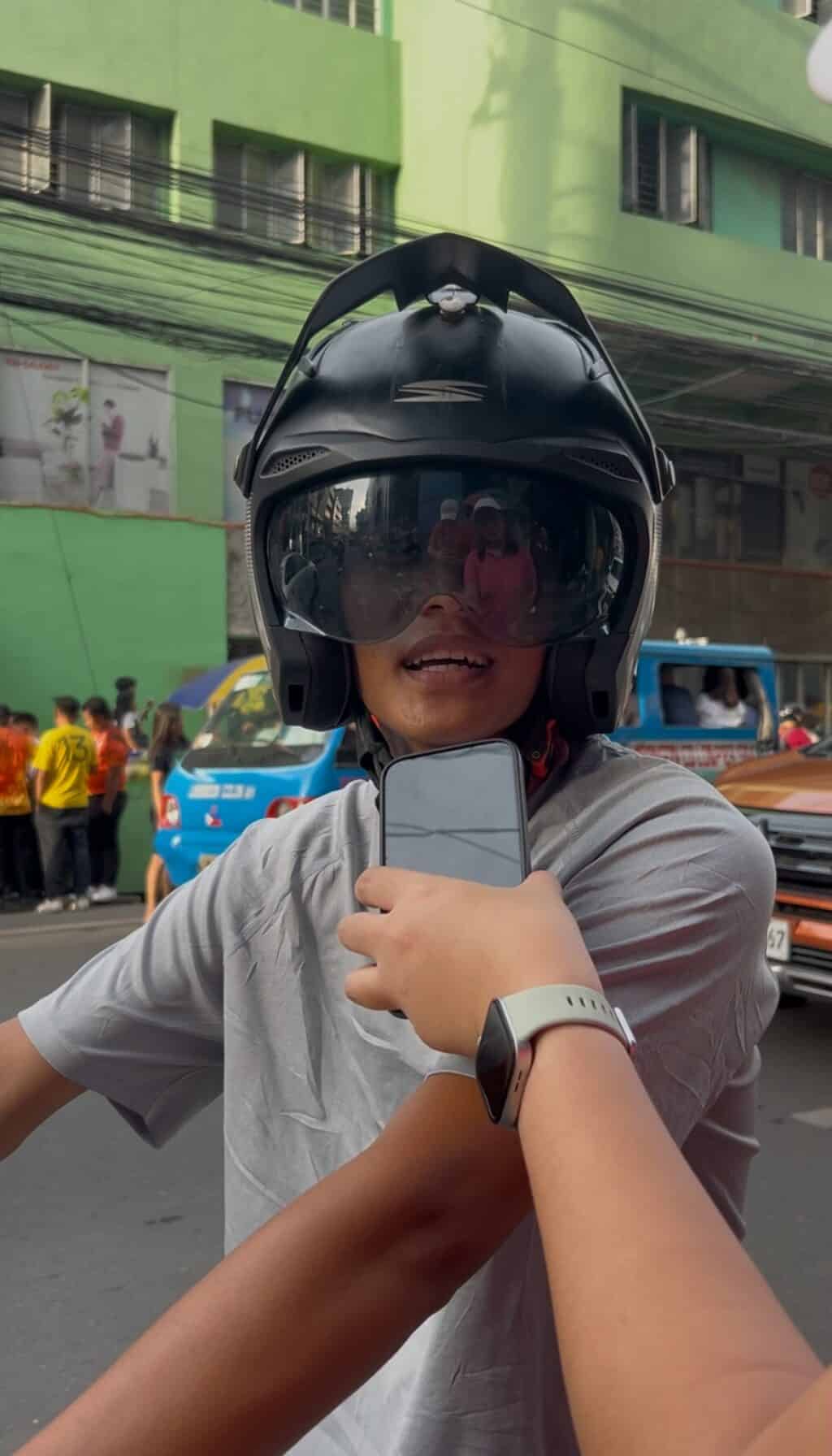CEBU CITY, Philippines – On Wednesday morning, May 8, tragedy struck Barangay Bulacao, Cebu City, as a senior citizen lost her life while using a pedestrian lane, also called a crosswalk.
Feliciana “Fely” Cabusas, 70, was crossing the street when she was hit by a multicab. The collision involved two vehicles—one driven by 64-year-old Rogelio Racaza, and the other by 73-year-old Bernabe Teofilo Gabiana.

A traffic enforcer was hit by a vehicle while helping pedestrians cross the road along the N Bacalso Avenue in Brgy. Lawaan I, Talisay City, Cebu on Wednesday evening, November 6. | CT-TODA FB Photo
Despite using the designated crossing for her safety, the road claimed the elderly woman’s life. The incident, which also injured another individual, reignited questions about the safety and effectiveness of pedestrian lanes.
Are they still serving their purpose, or have they become the most neglected road markings?
READ MORE:
Senior citizen killed while crossing the street in Cebu City
Talisay, Cebu: Traffic enforcer, helping pedestrians, hit by SUV
Is Cebu City a ‘walkable’ city? Netizens respond, expert weighs in
What is a pedestrian lane?
Pedestrian lanes, often referred to as crosswalks, are designated areas on roads to prioritize the safe crossing of pedestrians.
These markings are intended to signify to drivers the need to slow down or stop when someone is crossing. In essence, they are meant to protect lives and facilitate order on roads.
Under Republic Act No. 4136, also known as the Land Transportation and Traffic Code, drivers are mandated to yield to pedestrians within a marked crosswalk.
Violating this law, such as obstructing or ignoring pedestrian lanes, can lead to penalties, including fines ranging from P1,000 to P5,000 or imprisonment depending on the severity of the offense.
According to the Traffic Enforcement Unit (TEU) and the Cebu City Transportation Office (CCTO), the incident in Bulacao involved two multicabs traveling in the same lane.
Rogelio Racaza, the 64-year-old driver of the white multicab, reportedly hit the brakes upon seeing Cabusas crossing. However, his vehicle was pushed forward when the pink multicab behind him, driven by 73-year-old Bernabe Teofilo Gabiana, collided with his. The chain reaction then led to the fatal accident.
READ MORE:
5 safety tips from LTO-7 to avoid accidents
Drowsy driving: Tips to manage fatigue to avoid road accidents
Racaza claimed he tried to stop in time, but Gabiana, who admitted to driving at a moderate speed, said he could not avoid hitting the vehicle in front when it suddenly halted.
This incident highlights the harsh reality that pedestrian lanes are no longer always safe.
Public sentiment on the safety of pedestrian lanes

Photo by Pia Piquero
For commuters like 22-year-old Leomark, who requested not to reveal his last name, crossing the street using a pedestrian lane often feels like navigating a battlefield.
As a daily commuter from Consolacion, northern Cebu, he shared his frustrations with the lax enforcement of pedestrian safety rules in heavily congested areas like Colon.
“Struggling na kaayo mutabok sa pedestrian lane. Dili kaayo safe gyud, especially diri [Colon],” he said.
It’s already a struggle to cross the road using a pedestrian lane. It’s no longer safe, especially here in Colon.
He noted how vehicles rarely give way even when pedestrians are already crossing. For Leomark, the pedestrian lane still serves its purpose but only minimally, as compliance from drivers remains inconsistent.
“Harsh kaayo magpa dagan ang mga sakyanan diri. Dili gyud siya safe (They drive so fast. That’s why it’s no longer safe),” he added.

Photo by Pia Piquero
Similarly, a 25-year-old commuter from Guadalupe named Ivy had the same thoughts.
She reiterated the dangers posed by irresponsible drivers who disregard rules at pedestrian lanes.
“Dili na safe kay naay uban drivers dili na mutuman gyud sa rules. Kami na nuon ang mo-adjust,” she said.
It’s not safe anymore because some drivers do not follow the rules. We, pedestrians, will then have to adjust.
Ivy said there is a need for stricter implementation, especially for vulnerable pedestrians like senior citizens.
“Unta i-implement nga mohunong gyud ang mga drivers, samot na sa mga tigulang (I hope they will strictly implement the need for drivers to slow down and give way to pedestrians, especially for the elderly),” she added.
While many commuters no longer view pedestrian lanes as safe, drivers also face their own challenges in respecting these crossings.

A motorist weighs in on the importance of a pedestrian lane. | Pia Piquero.
Carver, 22, who frequently drives his partner to school, acknowledged that while he understands the priority given to pedestrians, there are instances when compliance becomes difficult.
“Sometimes dili ko ka comply kay magdali, unya dili ko kabantay nga sa ka traffic pedestrian lane na diay ako nahunongan,” he admitted.
(Sometimes, I cannot comply because I’m in a hurry. And sometimes, when it’s traffic, I forgot that I’m already in the pedestrian lane.)
Carver said that awareness and vigilance are crucial, not just for drivers but for pedestrians as well.

Noel, a 53-year-old habal-habal driver, the pedestrian lane is a sacred space that should be respected at all costs. | Pia Piquero
For Noel, a 53-year-old habal-habal driver, the pedestrian lane is a sacred space that should be respected at all costs.
“Agianan mana gyud sa mga tawo. Magpahinay jud ko og makakita kog pedestrian,” he said.
(That’s a right of way. That’s why I have to slow down whenever I see a pedestrian.)
CCTO’s take on pedestrian lanes
Traffic enforcers like Jurex Caitom, who has worked with the CCTO for five years, recognized the growing neglect of pedestrian lanes.

Traffic enforcers like Jurex Caitom, who has worked with the CCTO for five years, recognized the growing neglect of pedestrian lanes. | Pia Piquero
Caitom explained that violations related to pedestrian lanes are typically cited under “obstruction to pedestrians.” He said that drivers are obligated to yield to pedestrians crossing the street, especially at intersections with pedestrian lights.
“Kana violation, pwede na namo issuehan og obstruction kung naka stop signal na nya nakababag pa gyud sa agianan,” Caitom said.
(It’s definitely a violation since you’re blocking the pedestrian lane, and it’s considered obstruction.)
He added that incidents often occur because of both driver negligence and pedestrian impatience, particularly when pedestrians cross during a red light, or vehicles rush to beat a green signal.
Caitom also pointed out that while pedestrian lanes in urban areas are typically equipped with lights and signals, some drivers and pedestrians still fail to follow them.
“Naa man guy uban nga bisan naka-red signal, mulambang gihapon ang pedestrian, nya naka-go signal na ang sakyanan,” he said.
(Some even try to cross the road even when the light’s still red, and the vehicles are driving down.) / mme

